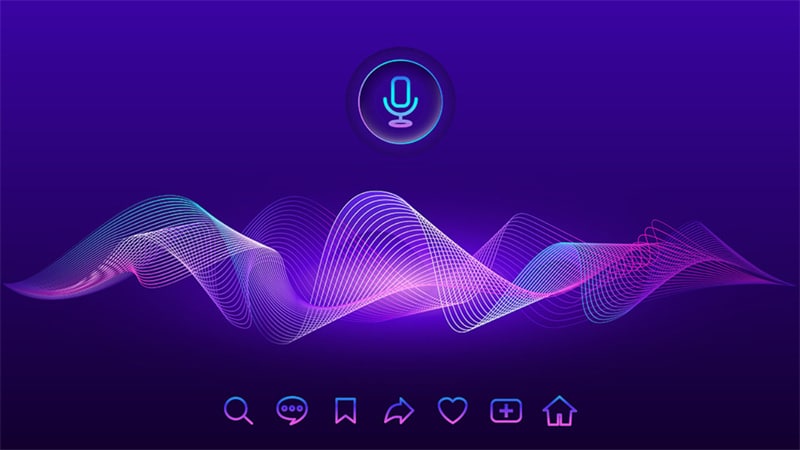
Text-to-speech (TTS) technology is an assistive technology (AT) that reads digital text aloud. It is used by people with visual difficulties or who have low vision to access written content.
TTS can also be used to support people with dyslexia, or other reading disabilities, to improve their reading fluency.
How does text-to-speech work?

Text-to-speech (TTS) technology creates a natural-sounding voice from the text. This technology can create talking books, assistive technologies for the blind and visually impaired, educational materials, or any other purpose where a natural-sounding voice is desired.
The basic principle behind TTS is simple: A computer program reads text and converts it into speech. However, there are many ways to achieve this, and the quality of TTS systems can vary widely.
Some common methods used to generate speech from text:
- Synthesized speech: This is the most common method of TTS and involves using a computer program to generate a voice from scratch. The convenience of this method is that it can create any kind of voice, including voices that mimic real people.
- Recorded speech: This method involves recording actual people speaking the text and then playing back the recordings. This can provide a more natural-sounding voice, but it is usually more expensive and time-consuming than synthesized speech.
- Mixed methods: Some TTS systems use a combination of recorded and synthesized speech. This can provide a balance between naturalness and cost/time efficiency.
No matter which method is used, the goal of TTS technology is to generate speech that sounds as natural as possible. In recent years, there have been great strides in this area, and TTS systems can produce very realistic-sounding speech.
The team from AI Voiceover Tools (https://www.aivoiceovertools.com) has compiled a list of the top TTS software, projects, and instructional content to help users and content creators. As technology improves, we can expect TTS systems to become even more lifelike and useful.
What are the benefits of text-to-speech?
Text-to-speech technology has come a long way in recent years. It is now more accurate and realistic than ever, making it a valuable tool for communication, learning, and business. Here are some of the benefits of text-to-speech:
- Text-to-speech (TTS) technology can improve reading comprehension and fluency.
- It can help with proofreading and editing.
- It can be used to create audiobooks or podcasts.
- It can be an accessibility tool for people with visual impairments or other disabilities.
- TTS technology can be used in educational settings to provide alternative learning material.
- The technology can be used for presentations, phone messages, and more in business settings.
- It can be used for entertainment, such as creating funny voices or sound effects.
- It can also be used to generate synthetic speech in many different languages.
If you're looking for a way to improve your communication or learn new material, text-to-speech may be the solution you're looking for. It's a versatile technology with many different applications, so there's sure to be a use that's perfect for you. Give it a try today and see how it can help you!
What are the limitations of text-to-speech?
Some text-to-speech technologies have difficulty pronouncing words with multiple syllables or uncommon words. They may also have trouble reading aloud long passages of text without sounding monotone or robotic. Some text-to-speech systems cannot generate expressive speech, such as inflection to convey emotion or stress certain words. This can make the output sound flat or artificial.
Another limitation of text-to-speech technology is that it generally relies on pre-recorded speech sounds, so it cannot create new sounds on the fly. This means that if a word or phrase is not in the system's vocabulary, it will not be able to say it. Additionally, text-to-speech systems cannot generate the same quality of speech as a human voice.
Despite these limitations, text-to-speech technology has come a long way in recent years and is continuing to improve. It can be a valuable tool for people with certain disabilities or who need assistance reading text. Additionally, text-to-speech can be used to create audio files of articles or books, which can be helpful for people who prefer to listen to content rather than read it.
How do I get started with text-to-speech?

If you’re interested in using text-to-speech technology, there are a few things you need to know. First, you’ll need to choose a text-to-speech system that meets your needs. Many types of TTS systems are available, so research is essential to find the one that’s right for you.
Once you’ve selected a TTS system, you’ll need to install it on your computer. Most TTS systems come with detailed instructions on how to do this. Once you’ve installed the software, you’ll need to create a user account and set up your speech preferences.
Once you’ve set up your TTS system, you’re ready to start using it! You can use TTS to read digital text aloud. To do this, you’ll need to open the document or file you want to hear. Then, you’ll need to select the portion of text that you want to have read aloud. Finally, you’ll press the “play” button on your TTS system to start the audio.
TTS can be a valuable tool for people who are blind or have low vision, as well as people with dyslexia or other reading disabilities. If you think TTS might be right for you, we encourage you to try it!










